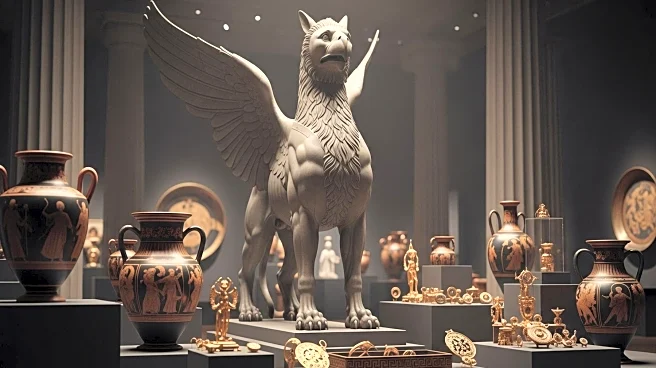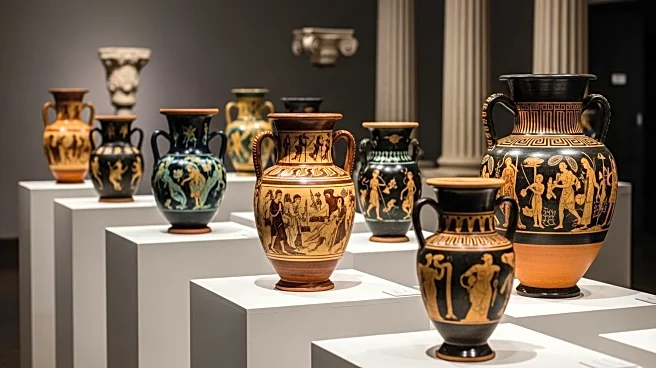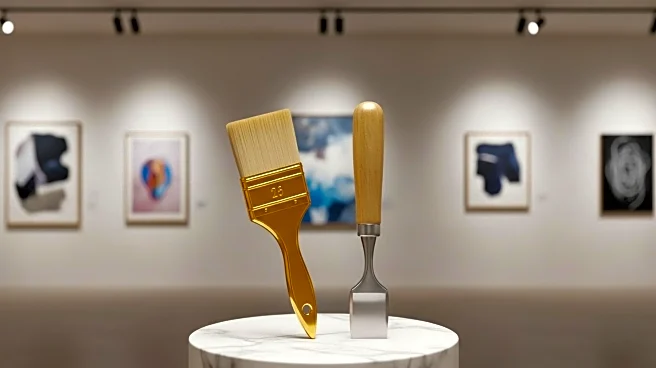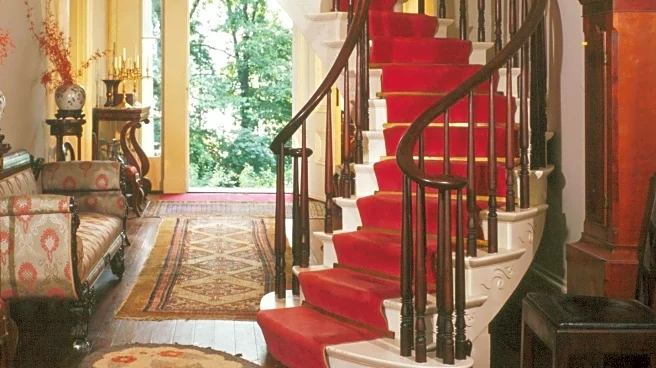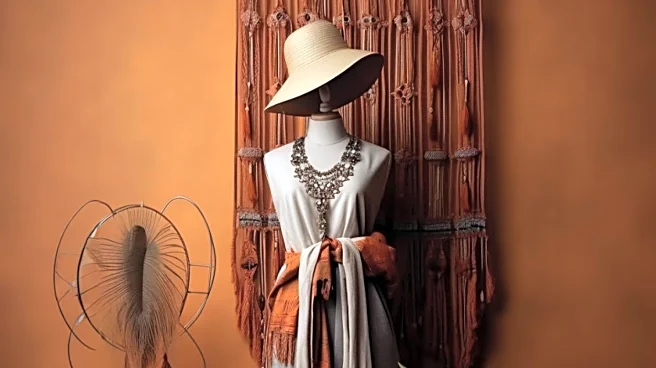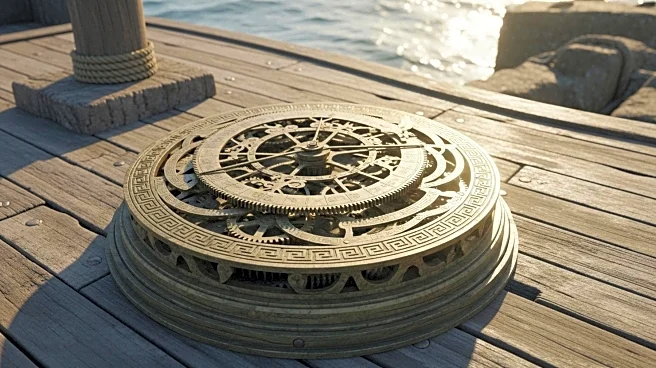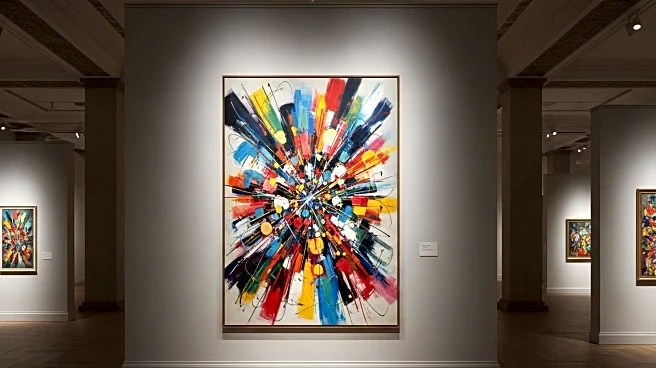What is the story about?
What's Happening?
The Getty Villa in Los Angeles is hosting an exhibition titled 'The Kingdom of Pylos: Warrior-Princes of Ancient Greece,' showcasing artifacts from the ancient Greek kingdom of Pylos. The exhibition features items from the tomb of the Griffin Warrior, an unidentified aristocrat whose burial site was discovered intact by archaeologists from the University of Cincinnati. The tomb contained thousands of objects, including weaponry, gold, and gems, alongside an ivory box depicting a lion attacking a griffin. The exhibition explores themes such as the Palace of Nestor, burial practices, and artistic production in Pylos, offering insights into late Bronze Age Greece.
Why It's Important?
The exhibition provides a unique opportunity to explore ancient Greek art and culture, offering insights into the social and artistic practices of the time. The discovery of the Griffin Warrior's tomb and its contents challenges established timelines of Greek art, suggesting advanced artistic techniques were in use much earlier than previously thought. This revelation could influence scholarly understanding of ancient Greek history and art, potentially reshaping narratives about cultural development in the region. The exhibition also highlights the importance of archaeological collaboration and the role of museums in preserving and interpreting historical artifacts.
Beyond the Headlines
The exhibition raises questions about the ethical considerations of displaying artifacts from ancient tombs, particularly regarding cultural heritage and ownership. It also underscores the impact of natural disasters on historical sites, as evidenced by the fire that nearly reached the Getty Villa. The exhibition's focus on the Griffin Warrior's tomb offers a glimpse into the burial practices and societal structures of ancient Greece, providing a deeper understanding of the cultural significance of funerary art and rituals.
AI Generated Content
Do you find this article useful?
